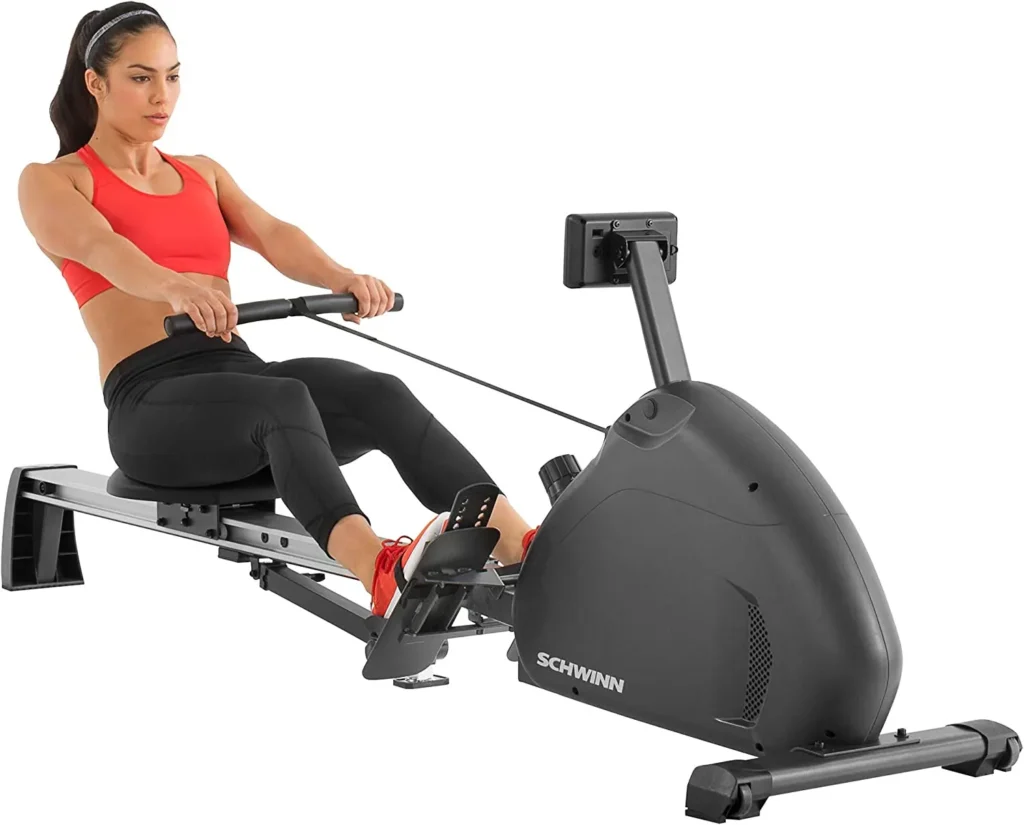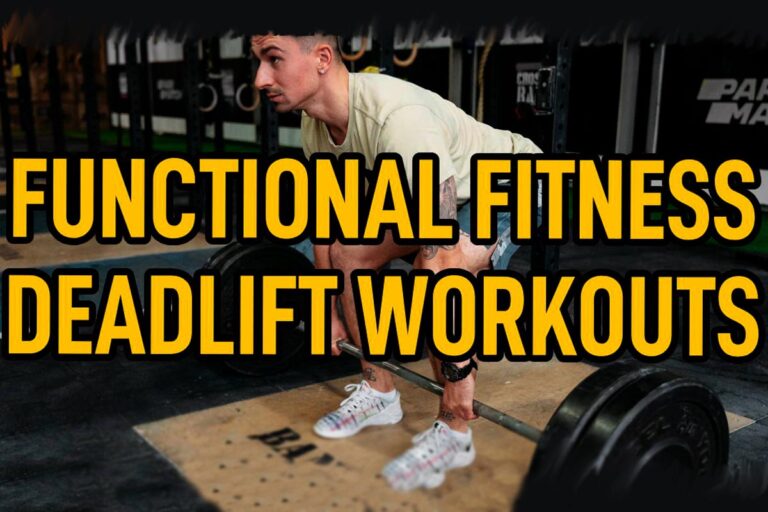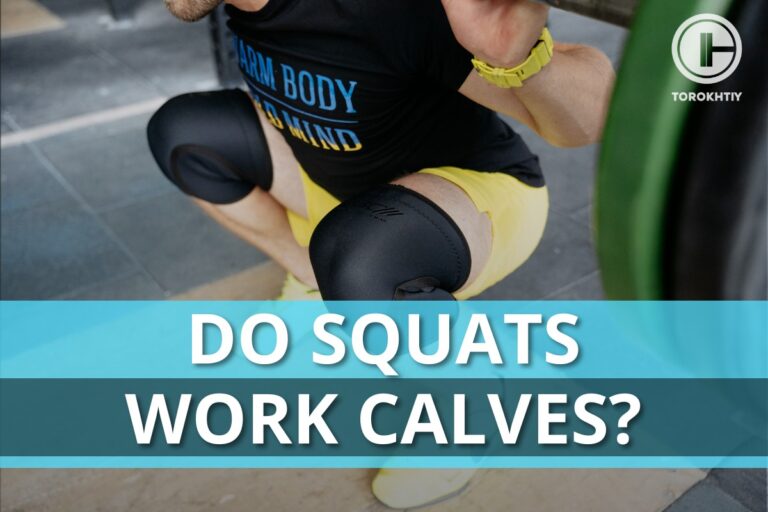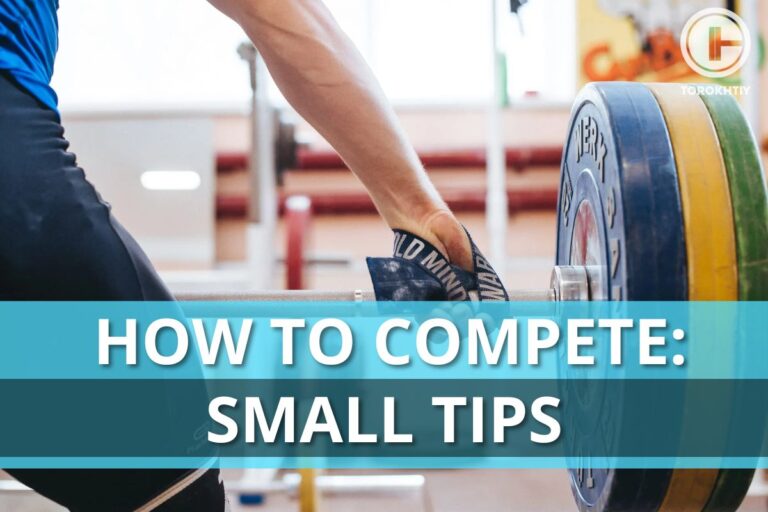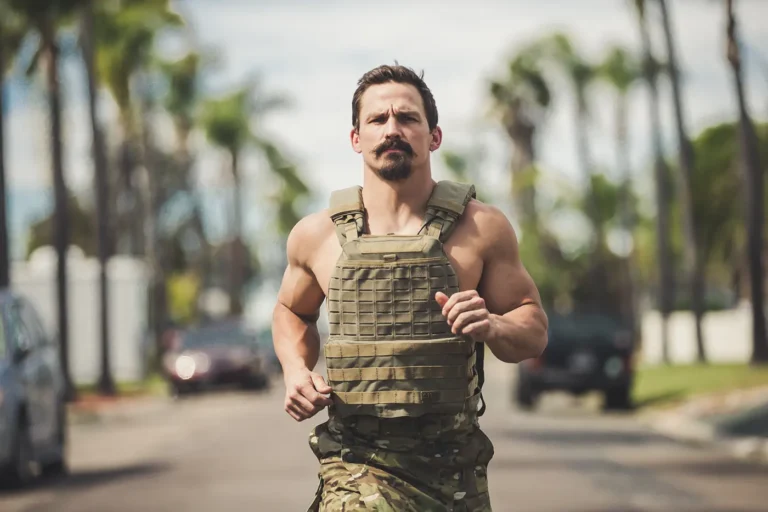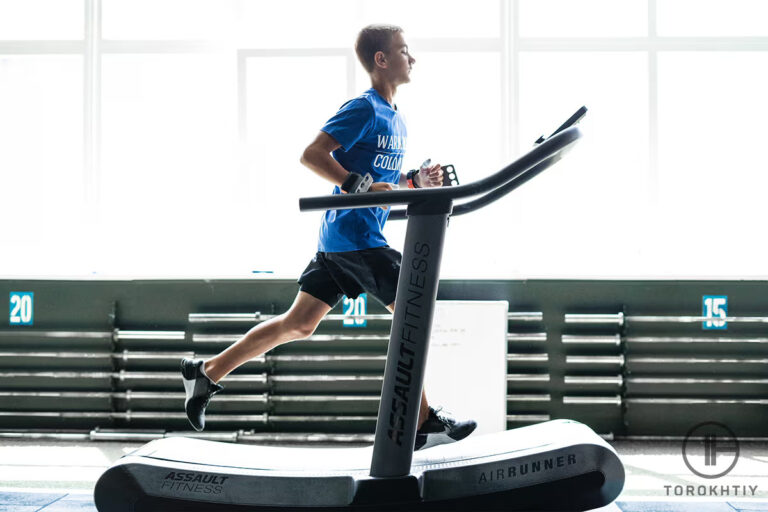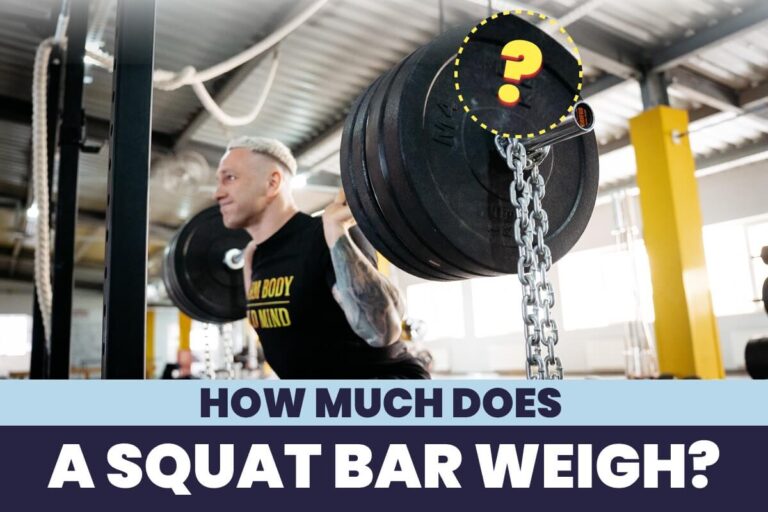What Muscles Does a Rowing Machine Work?
If you are a frequent gym goer, a fitness enthusiast, or just starting your fitness journey, you might have heard about the rowing machine, but what muscles does a rowing machine work? Will it help you train strong legs, big arms, or make your belly flat? In this article we will explain everything regarding this machine.
The rowing machine works the upper and lower body, as well as core muscles. Muscles used in rowing are hamstrings, glutes, calves, quads, forearms, biceps, lats and spine erectors.
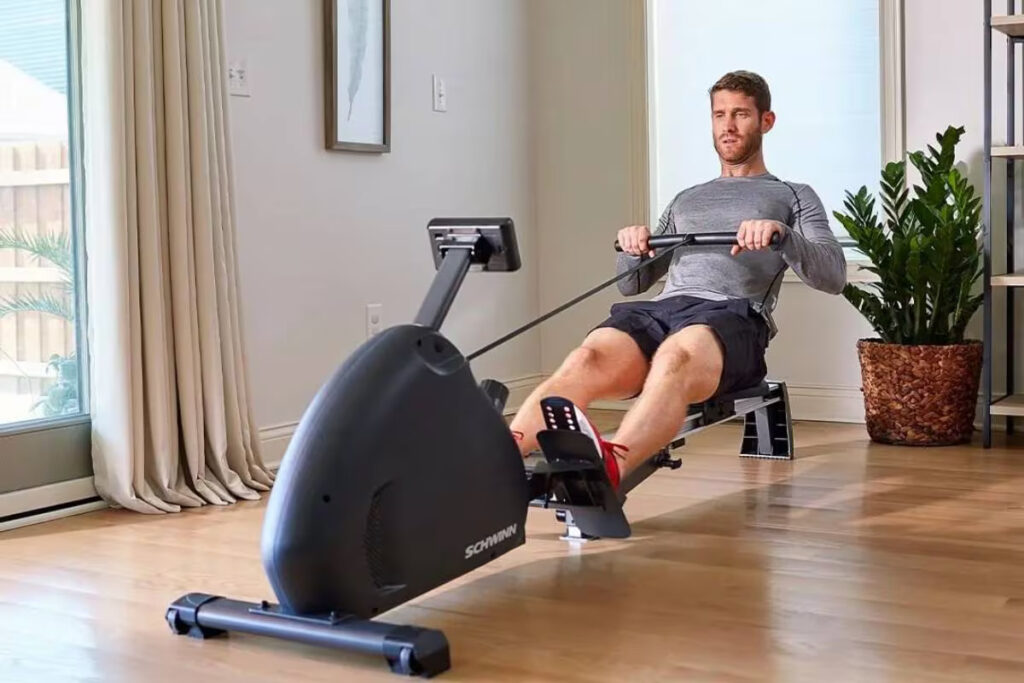
Muscle Groups Worked With the Rowing Machine Workout
What does rowing work out? The rowing machine is not just a machine used for cardiovascular endurance, but also to make the muscles stronger. It trains and strains various muscle groups during the workout, so it is becoming more popular as each day passes. We will now go over the eight main muscles worked by the rowing machine.
1. Hamstring
According to the American Academy of Orthopaedic Surgeons, the hamstring is one of the key muscles contributing to the regulatory and normal movement of the body.
The hamstrings run along the back of your thigh. It is of utmost importance to train this muscle to keep the body moving as fresh as ever.
2. Glute Muscles
Methodist hospital argues that strong glutes are the best counter for back and knee pain.
The gluteus maximus is an important muscle for hip extension and lateral rotation. A strong glute muscle isn’t necessarily a big muscle, it just needs to be firm. Glutes are just one of the muscles worked with rowing.
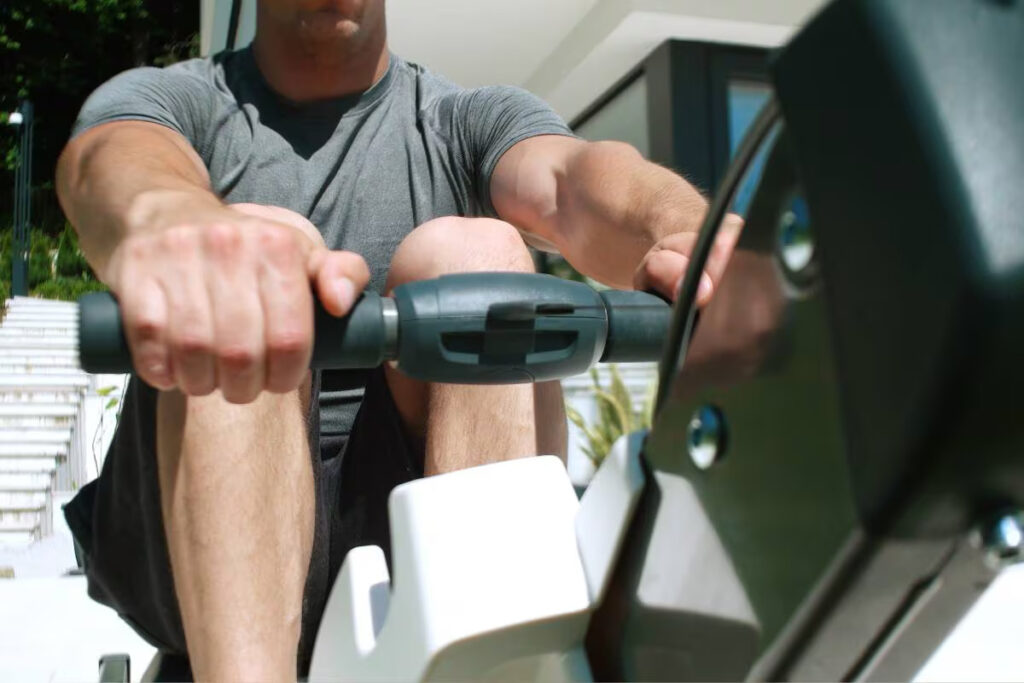
3. Calves
The calf muscle is one the most important muscles for running, walking, and jumping. It is also one of the hardest muscles to grow. The rowing machine will not make your calves as big as humanly possible, however they will be firm and strong enough to withstand resistance while walking or running.
4. Spinal Erector
The erector spinae (ES) is one of the core and paraspinal muscles. These muscles are not worth extensively training, because they do not provide any aesthetically pleasing results. Since they are not that aesthetic to begin with, this muscle usually fades away in the memories of people as they forget they are even training this muscle group with the rowing machine.
5. Quad Muscle
A strong quad muscle is of great importance to the normal movement of the body. It decreases knee injuries by a large margin, aids in walking, running, squatting, and jumping. It also feels really nice when you pump your quad muscle in the gym, it feels like a rock.
6. Forearm Muscle
Anatomically, the forearm is the part of the upper limb between the elbow and the wrist. Strong forearms allow you to lift heavier weight, besides women love this muscle. There is nothing sexier than a man who rolls up his sleeves, ready to do some work. Show off those defined forearms with the rowing machine.
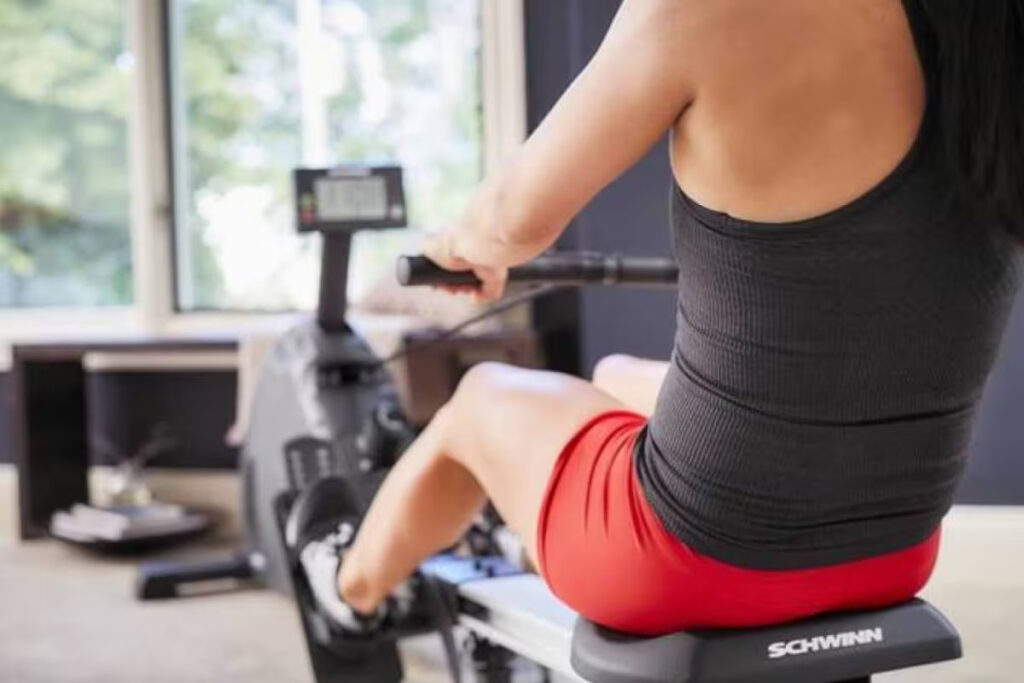
7. Biceps Muscle
The biceps brachii (BB), commonly known as the biceps, is a large, thick muscle located on the ventral portion of the upper arm. It is probably the most well known muscle, and is frequently related to pure strength. With the right combination of endurance training and strength training the biceps has a lot of room to grow, especially if you are one of the lucky few who are blessed with good bicep genetics.
8. Lat Muscle
One of the most aesthetically pleasing muscles, this workout will surely make you wider. The lat muscle is a broad, flat muscle that occupies most of the lower back of the chest. Although the muscle’s primary function is to move the upper extremities, it is also considered an auxiliary muscle for breathing. I cannot stress this enough, but out of all of the muscles worked out by the rowing machine, this one might be most worked. Essentially, when you think about rows, they are primarily a back exercise.
Phases of Rowing and What Muscles Are Worked
Finally, after all of the explanations and clarifications, here comes the sweet stuff. Let’s get to the workout, the phases of the workout and the muscles used on a rowing machine in the different phases.
There are four phases related to this exercise, and each one affects the body in a different way.
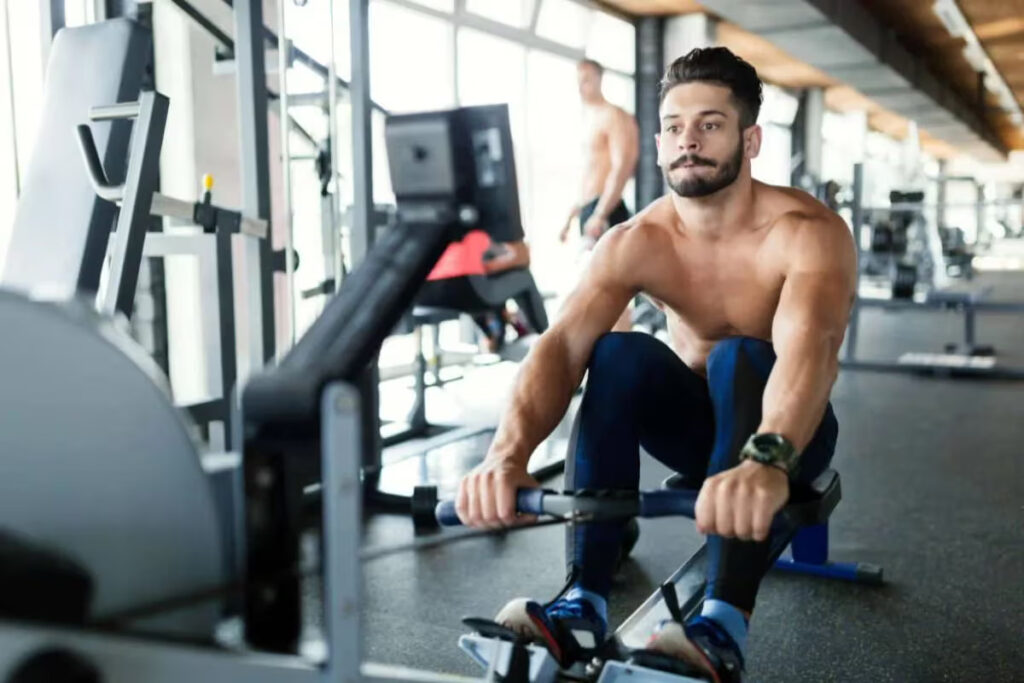
1. The Catch
The catch is the first out of four phases, and it got its name from “catching” the oar out of the water. A catch is the beginning of the stroke. To maintain good posture, lean forward slightly while exercising your back muscles. Stretch your arms. The shins are vertical. The seat is 6 to 8 inches from the feet, and the heels are slightly raised.
Muscle groups trained: Hamstrings, glutes, calves, triceps, lats, traps, rhomboids.
2. The Drive
The drive got its name from “driving” or taking your stroke. It is the second out of four stages. Drive takes place in two stages. First, straighten your knees and drive the seat back. Keep your arms straight and your back wide. Later in the drive, your legs will be fully extended. Open your hips and lean back just a little bit. As you extend your hips, you should feel your glutes tighten. Keep your core moving throughout the movement to maintain good alignment.
Muscles groups trained: Quads, hamstrings, glutes, deltoids, biceps, lats, traps, lower back, rhomboids, abdominal muscles.
3. The Finish
This is the final phase of your body in this movement, hence it’s called the finish. Lean back just a little and pull the handle towards the lower part of your ribs to complete the pull. By the end, your shoulders should be slightly behind your hips, and you’ll feel your core working. The propulsion sequence consists of first propelling the leg, then swinging the body back, and finally pulling the arm.
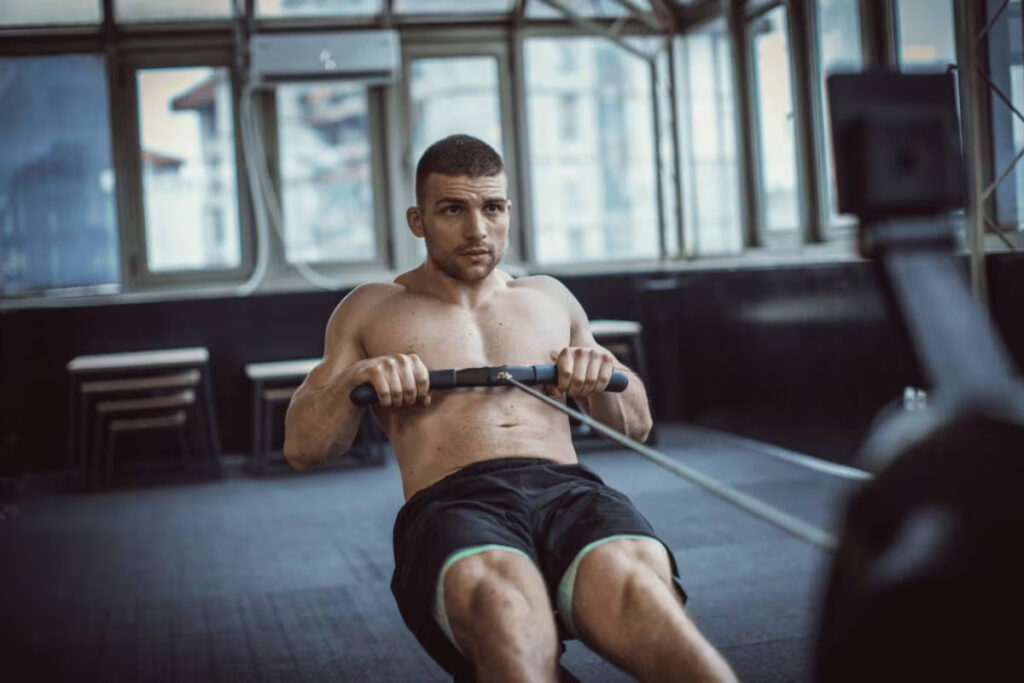
4. The Recovery
The recovery is pretty straightforward, as it implies “recovering” for the next full movement. It is the last of the four phases. The recovery is just as, if not ever more important than the drive. The operating sequence during recovery is the reverse of drive, so first the arms, then the torso, then the legs. Recovery should be slow while the drive is fast. Then return to the catch to complete the sequence.
Top 3 Mistakes When Using Rowing Machine
According to famous fitness blog Ludum, injuries while rowing are inevitable. Around 53% of all rowing injuries are lumbar spine injuries. That’s why it is important to be cautious when performing this exercise. Here, we will go over the most common mistakes when doing this exercise.
1. Rowing With Arms and Not With Legs
One of the biggest mistakes people make when using a rowing machine is pulling harder on the handle and concentrating on arm movements to try to row faster. However, when rowing, most of the power generated in each stroke comes from the legs, with about one-fifth of the total power generated coming from the arms and another fifth coming from the core.
If you want to increase your rowing speed, pulling harder on the handlebars will do little good. Instead, you should focus on strengthening your legs for the drive phase. Only after your legs are straight, try to use your upper body strength to pull the handle.
2. Quickly Going Through the Drive Phase
Another mistake many people make when rowing is trying to get through the ride as quickly as possible. Fast propulsion is important to increase movements per minute, but the effective propulsion is to use the resistance in the grip to push your heels backwards onto the seat. Instead of focusing on speed, think about strength and connection while in the drive phase.
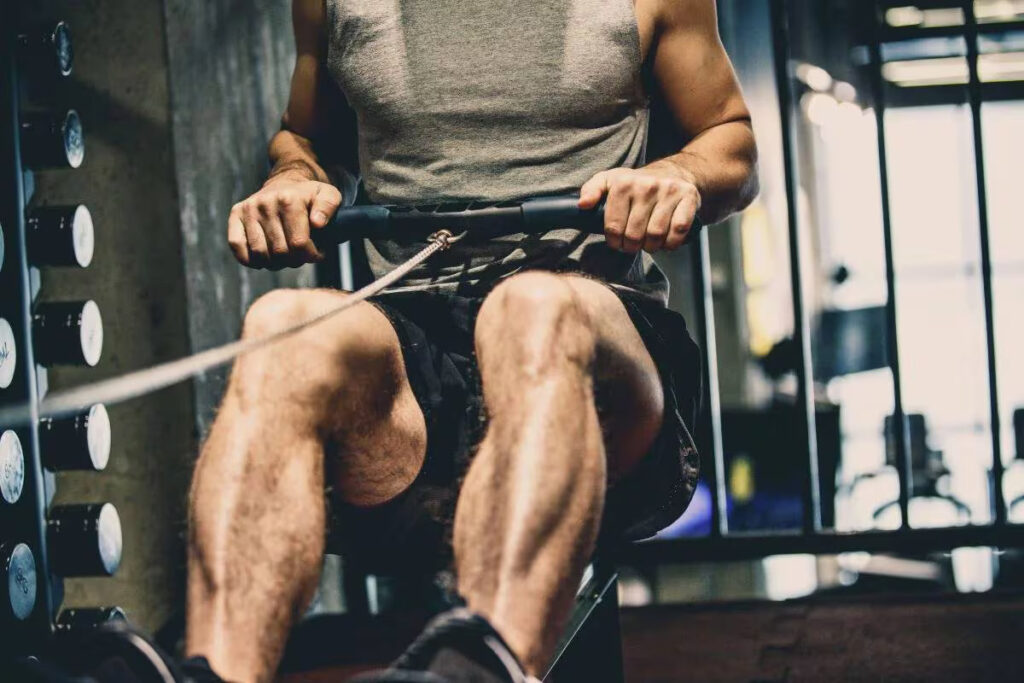
3. Early Bending of the Knees During the Recovery Phase
A final mistake to avoid when using a rowing machine is bending your knees too early during your recovery period. As the name suggests, recovery is part of a stroke and gives your legs the rest they need. Bending your knees too early can limit your recovery, expend more energy, and make it harder to find a good rhythm.
To avoid premature crouching, after completing the target phase, you need to keep your legs straight for a while, hold your grip and bring your arms forward.
How to Use a Rowing Machine Correctly for Muscle Workout?
So, now that we have talked endlessly about the rowing machine and how to do the “row”, now it’s time to go back to the very beginning. We said that the rowing machine is primarily used for cardiovascular endurance, and that around 85% of the total muscles are worked. Did you know that you can train 100% of your muscles with the rowing machine?
These techniques however stray away from the traditional row, and include other exercises done on the machine. This is done to maximize muscle activity and growth, and to engage all possible muscles not included in the row.
Some basic ones, like the bicep curl are self explanatory, where you pull the bar towards yourself like doing any other bicep workout. It is highly effective, you wouldn’t even need weights if you had this machine at home.
A leg workout would be the low row, where you straighten your legs, sit up straight and pull your bar toward your lower abdomen. The rowing motion is reduced and you can train your legs smoothly. This should give your legs a nice burn while doing the exercise, and an even better burn the next morning (although the morning burn doesn’t feel as good).
For the core muscles you should consider the side to side row. This exercise combines traditional rowing with training that focuses on strengthening the core muscles through lateral movements. With your hand on the handle in the traditional position, pull the handle to your side and slide it back onto the machine. Repeat on both sides of course to target both sides of your core.
Rowing Machine We Recommend – Schwinn Crewmaster Rower
Now, besides correct form, a balance of strength and concentration and, of course, a strong will to prevail and sculpt your muscly body, another thing you will need is a good rowing machine.
And where else to purchase that machine than from Schwinn, one of the oldest bikes and rowers manufacturers in the United States. There has been a 20% increase in people rowing indoors since 2014, there isn’t a better time to purchase this machine than now. The Schwinn rower has many features that set it apart from its competition.
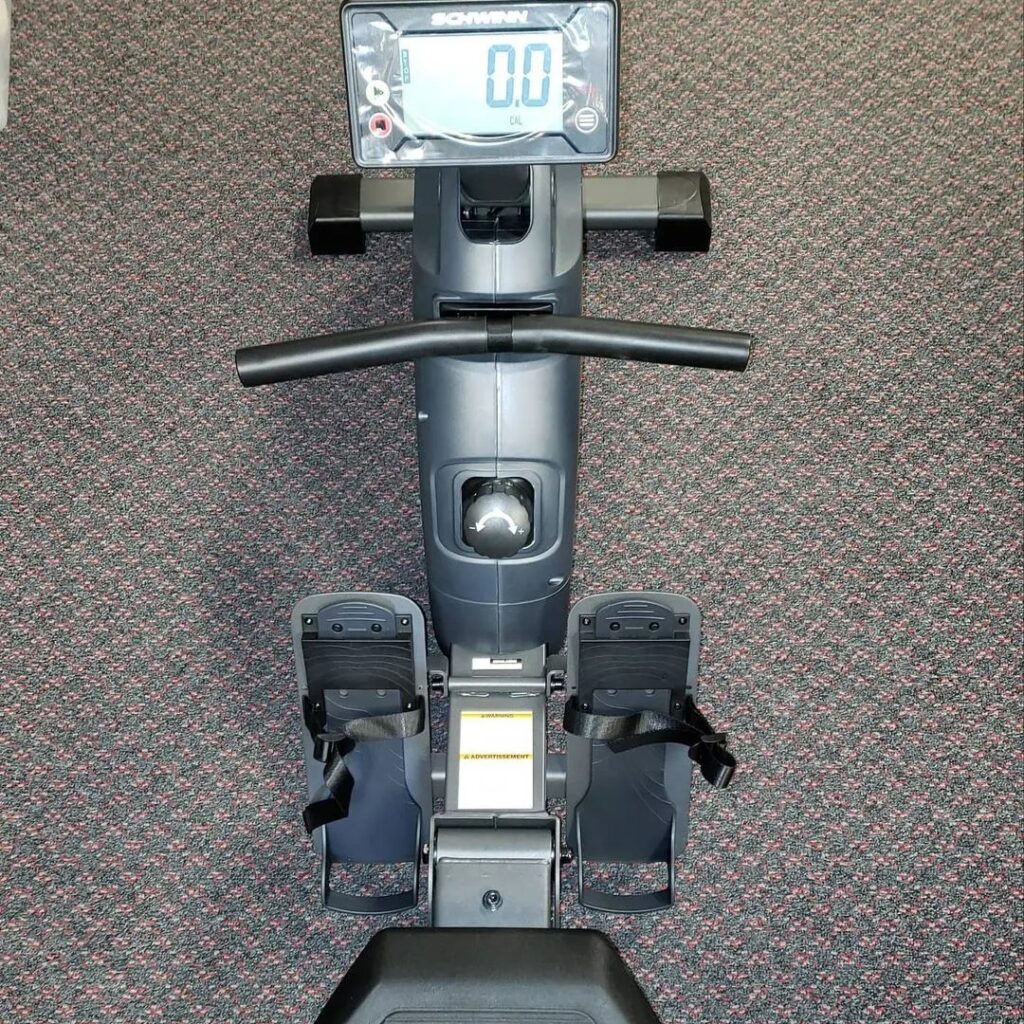
A large LCD display allows you to track time, distance, calories and much more. 10 resistance levels that will equally satisfy the demands of either a beginner or an experienced athlete. A large comfort seat designed for superior comfort, but also for practical cleaning. Large stable row pedals to anchor the user’s feet and leverage their strength together with 250 lbs max weight capacity make this machine a good choice even for big guys.
Finally, the best thing about this rowing machine is its folding storage mode which allows it to store the machine vertically when not in use.
FAQ
Is 20 Minutes of Rowing Enough?
15 to 20 minutes of rowing is just fine, especially if you are looking to lose weight and are just starting your fitness journey.
How Quickly Will I See Results From Rowing?
Typically it takes around one month for you to see some change, while it would take around 3 months for others to notice as well.
Can You Get Muscular From Rowing?
Yes of course! You can add muscles in various places like the upper and lower body, as well as your core.
Conclusion
To conclude, by following the four stages of the row, by knowing which muscles you are training and what to avoid you are now ready to achieve your perfect body! Comment below your opinions, your experiences or further comments!
Also read:
- Rowing Machine Benefits
- Best Magnetic Rowing Machine
- CONCEPT2 Model D Review
- Types of Rowing Machines
- Best Water Rowing Machine
- Is Rowing Good for Weight Loss
- Rowing Machine vs Stationary Bike
- Rowing Machine vs Treadmill
References:
- Cardiovascular Endurance // Clevelandclinic: https://my.clevelandclinic.org/health/articles/24754-cardiovascular-endurance
- Hamstring Muscle Injuries // Orthoinfo: https://orthoinfo.aaos.org/en/diseases–conditions/hamstring-muscle-injuries
- 3 Reasons Strong Glutes are Important // Bestcare: https://bestcare.org/news/3-reasons-strong-glutes-are-important
- Calf Muscle // Clevelandclinic: https://my.clevelandclinic.org/health/body/21662-calf-muscle
- Erector Spinae // Physio pedia: https://www.physio-pedia.com/Erector_Spinae
- Do girls like boys’ forearms? // Quora: https://www.quora.com/Do-girls-like-boys-forearms
- The 7 Best Exercises to Build a Highly Attractive and Aesthetic Physique // Medium: https://medium.com/in-fitness-and-in-health/the-7-best-exercises-to-build-a-highly-attractive-and-aesthetic-physique-aa8a7e0922de
- Common rowing injuries and how to prevent them // Ludum: https://ludum.com/blog/athlete-health-fitness/common-rowing-injuries-and-how-to-prevent-them
- The Rise of Rowing in Health Clubs // Ihrsa: https://www.ihrsa.org/improve-your-club/the-rise-of-rowing-in-health-clubs/
Why Trust Us?
With over 20 years in Olympic Weightlifting, our team does its best to provide the audience with ultimate support and meet the needs and requirements of advanced athletes and professional lifters, as well as people who strive to open new opportunities and develop their physical capabilities with us.
By trusting the recommendations of our certified experts in coaching, nutrition, dietology, and sports training programming, as well as scientific consultants, and physiotherapists, we provide you with thorough, well-considered, and scientifically proven content. All the information given in the articles concerning workout programming, separate exercises, and athletic performance, in general, is based on verified data. We ensure that you can rely on our professionals’ pieces of advice and recommendations that can be treated as personalized ones which will benefit you and fully meet your needs.
The product testing process is described in more detail here
Author: Ihor Shymechko
Pro Olympic Weightlifter, Coach
Best Results: Snatch – 208 kg,
C&J – 240 kg
Ihor has been a professional weightlifter since 1996, boasting over two decades of competition experience. His notable achievements include clinching the European Championship in 2009 and securing a silver medal in the 105kg division at the Senior World Championships in 2011. Ihor represented his country in the 2008, 2012, and 2016 Summer Olympics. After retiring from competitive weightlifting, he transitioned to coaching, leveraging his vast experience to guide athletes who now compete on both national and international stages.

